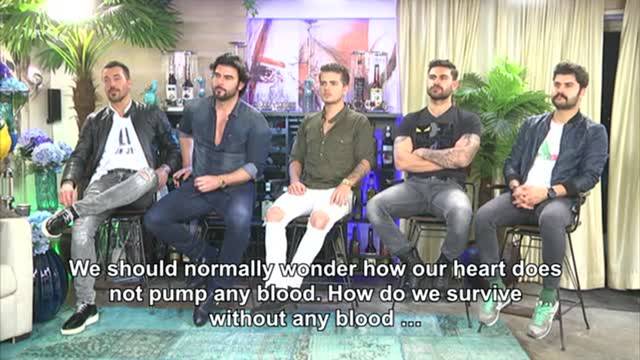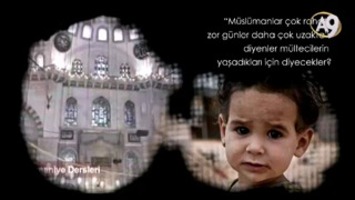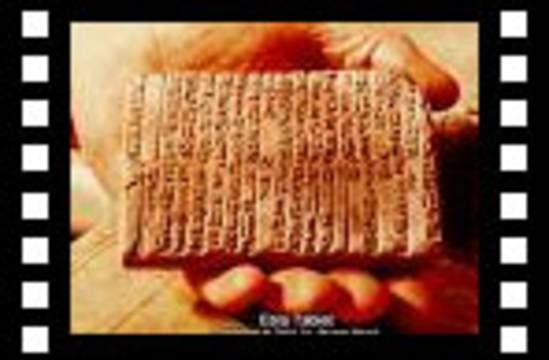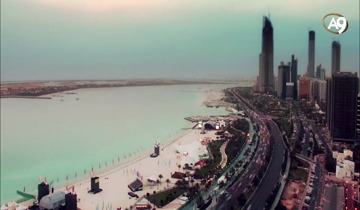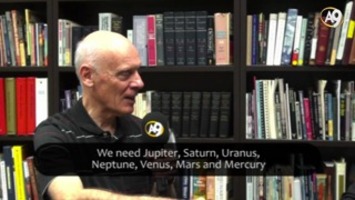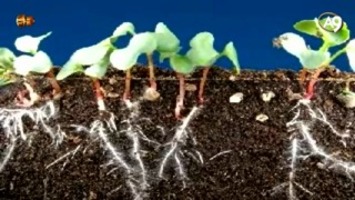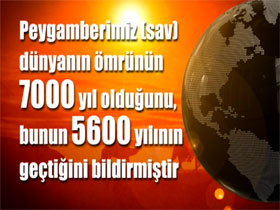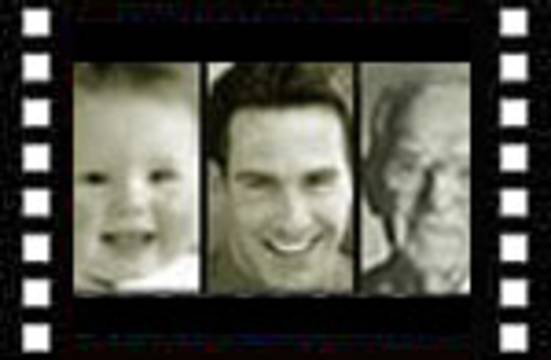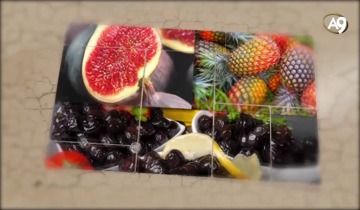Oxygen…
The miraculous life source bestowed by Allah …
The invisible and imperceptible elixir of life we breathe into our lungs at every moment....
We use this blessing from Allah every moment, every second. Moreover, this is not something we can ever buy or borrow from someone we know.
But there is no reason to go far to find it. It is there ready for us, every moment, everywhere we go.
Oxygen is bestowed on us as a blessing every single moment, as we sleep, work or talk. And we pay no price for it. But could we survive for long without it? Maybe two or three minutes, at most...
Someone deprived of oxygen will first lose consciousness; brain death then begins within five minutes. After that, all the body’s systems come to a stop, just like a machine disconnected from the mains, and death ensues.
Everyone is careful to thank people who do nice things for them. But how often do you give thanks to our Creator, Allah, He Who gave you life?We have established you firmly on the earth and granted you your livelihood in it. What little thanks you show! (Surat al-A’raf, 10)
Features of Oxygen
Oxygen is a colorless, odorless, tasteless and non-toxic gas. These are essential properties for oxygen to be capable of use by living things. Oxygen makes up 21% of the air we breathe. Were that proportion to rise to just 25%, then there would be a significant rise in the number of explosions of flammable materials on our planet.
Our Lord has created the oxygen in the atmosphere to be at a level where it has no explosive effect, and this is without doubt a very great miracle.
Energy is essential for life. We obtain energy by “burning” the foods we consume from plants. Burning takes place as foods react with oxygen. The fundamental reaction that produces energy for living things is the oxidation, or burning, of carbon and hydrogen compounds. Our bodies are basically composed of carbon and hydrogen compounds. So, why don’t our bodies suddenly burn up like matchsticks?
It is indeed amazing how bodies do not burn up, despite being in constant contact with oxygen. This is because under ambient temperatures the molecular form of oxygen, O2, is to a large extent inert, which means it is non-reactive.
But this gives rise to another question; as oxygen is a molecule that does not react easily, then how does this molecule enter into reactions in our bodies?
The answer to this question, which has perplexed scientists ever since the 19th century, emerges as the result of advances over the last 50 years. Biochemical observations revealed that certain special enzymes in the human body are solely responsible for causing the form of oxygen found in the atmosphere, O2, to enter into reaction. As the result of highly complex processes, these special enzymes in our cells use iron and copper atoms in our bodies as catalysts, or in other words accelerants, and thus turn oxygen into a reactive form.
This is a most noteworthy state of affairs: oxygen is a flammable element and would normally be expected to also ignite our bodies. In order to prevent that, O2, the form of oxygen in the atmosphere, is created to be “inert” so that it does not react easily. But our bodies need oxygen to be reactive in order to generate energy. For that purpose, a complex enzyme system that makes this inert gas highly reactive has been installed in our cells.
The enzyme system in question is a marvel of creation that the theory of evolution, which maintains that life emerged by coincidences, can never account for.
One feature of this enzyme system is that it only functions on the condition that it works in full complexity, for which reason it cannot be reduced to a simpler form. And it is therefore impossible to maintain, as evolution claims, that this system followed a developmental course from the simple to the more advanced. Prof. Ali Demirsoy, a biologist from Hacettepe University in Turkey and one of the country’s leading proponents of evolution, makes this admission on the subject:
But there is a still unresolved problem here. In performing this breakdown (with oxygen), mitochondria use a specific number of enzymes. The absence of one of these enzymes will cause the whole system to stop working. In addition, energy acquisition with oxygen cannot be regarded as a system that can develop in stages. Only the whole thing can establish a functional system. For that reason, instead of the stage by stage development we have been espousing as a principle hitherto, we have to assume, no matter how unwillingly, and however slight the probability, that all the enzymes (enzymes of Krebs cycle) that would carry out oxygen reactions of the mitochondria entered the cell at one single time, by chance, or that they all formed within the cell at the same time. Because all systems that cannot make full use of oxygen, or that remain at an intermediate stage, would be destroyed when they came into contact with oxygen. (Ali Demirsoy, Yaşamin Temel Kurallari: Genel Biyoloji (Basic Principles of Life: General Biology), Genel Zooloji (General Zoology), Vol 1, Part 1, Ankara, 1998, p. 578)
Carbon does not easily react with oxygen at normal temperatures.
But the chemical properties of oxygen and carbon have been so arranged that they only react and produce combustion at very high temperatures. Were that not so, life on Earth would be impossible. If oxygen and carbon were slightly more disposed to react, then when the temperature rose slightly, it would be nothing out of the ordinary for people, trees and animals to combust and burn all of a sudden. For example, someone walking in the desert could have suddenly burst into flames when the temperature reached its maximum in the middle of the day like a match stick. Plants and animals would be exposed to the same danger. Obviously, there could in fact be no life to speak of at all in such a world.
If oxygen and carbon possessed rather higher inert properties, then it would be very difficult to light a fire on Earth, and maybe impossible. And without fire, it would be impossible for people to warm themselves or technology to develop, because apparently technology depends on metals, and metals can only be used by melting and molding them at very high temperatures.
This shows that the chemical properties of oxygen and carbon are again perfectly arranged for human life. Michael Denton writes this on the subject:
This curious unreactivity of the carbon and oxygen atoms at ambient temperatures, combined with the enormous energies inherent in their combination once achieved, is of great adaptive significance to life on earth. It is this curious combination that not only makes available to advanced life forms the vast energies of oxidation in a controlled and orderly manner but has also made possible the controlled use of fire by mankind and allowed the harnessing of the massive energies of combustion for the development of technology. (Michael Denton, Nature's Destiny, pp. 122-123)
To put it another way, carbon and oxygen were created in the ideal form for life. The properties of these two elements allow us to light a fire and use that fire in the most suitable way. Moreover, everywhere on Earth is full of trees that contain high levels of carbon that we can easily use to make fire. These things all show that fire and materials related to it are created in the ideal forms for human life. Indeed, Allah says in the Qur’an that:
He Who produces fire for you from green trees so that you use them to light your fires. (Surah Ya Sin, 80)
Our bodies’ ability to use oxygen stems from the fact that this gas is also soluble in water. The oxygen that enters our lungs when we breathe immediately dissolves and enters the blood stream. A protein called hemoglobin in the blood traps these oxygen molecules and transports them to the cells. By means of the special system inside the cells that we have just seen, carbon compounds known as ATP are burned using this oxygen and energy is thus obtained.
All complex life forms obtain energy through this system. But the functioning of the system of course depends, primarily, on the solubility of oxygen. If it were not sufficiently soluble, then little oxygen would enter the blood and that would not be enough to meet the cells’ energy needs. Were oxygen more soluble, the level of oxygen in the blood would rise enormously and give rise to ”oxidation toxicity.”
PRESENTER: What would happen if oxygen were slightly more or less soluble?
Let us look at the first probability. If oxygen were slightly less soluble in water, and therefore in blood, then less oxygen would enter the blood stream and the cells would not receive enough oxygen. In that event, it would be hard for life forms with high metabolisms such as human beings to survive. If that were the case, no matter how much we breathed, the oxygen in the air would still fail to reach the cells in sufficient amounts, so we would face the constant danger of gradual suffocation.
If oxygen were slightly more soluble, the result would be ”oxidation toxicity,” as we have just described. Oxygen is actually a very dangerous gas and can be fatal to living things when normal limits are exceeded. When the level of oxygen in the blood rises, this oxygen reacts with water and gives rise to highly reactive and destructive side products. The body contains complex enzyme systems that overcome this effect of oxygen. But if the oxygen level rose slightly, these enzyme systems would not work and every breath we took would poison our bodies more and we would soon die. The American biochemist Irwin Fridovic says this on the subject:
All respiring organisms are caught in a cruel trap. The very oxygen which supports their lives is toxic to them and they survive precariously, only by virtue of elaborate defense mechanisms. (Irwin Fridovich, "Oxygen Radicals, Hydrogen Peroxide, and Oxygen Toxicity", Free Radicals in Biology, (ed. W. A. Pryor), New York: Academic Press, 1976, pp. 239-240)
What protects us from this trap, from either oxygen toxicity or suffocation from lack of oxygen, is that the level of solubility of oxygen and the complex enzyme systems in the body are set out and created just as required. Allah has created the air we breathe and the systems that enable us to use that air in perfect harmony with one another.
The Special Balances Established for Oxygen
-
-
The human brain was created with a need for glucose and oxygen. For example, an adult human can last for about 4 minutes without oxygen, and a newborn baby for a maximum of 10 minutes. In order for the brain to have a sufficient and constant supply of oxygen, three different structures in the human body work in an interconnected way:
-
The oxygen in the air we breathe is carried into the body through the nostrils, windpipe and lungs. In the lungs, the oxygen passes from the air into the blood stream and is attached to the hemoglobin in the red blood cells in blood. These red blood cells that transport the oxygen in the blood are manufactured in the bone marrow. Oxygen-rich blood is distributed via the cardiovascular system throughout the body. By that means, oxygen is just carried from one organ to another in a flawless manner, and the system is repeated, without stop, every time you breathe.
-
As you hear and reflect on these words and while you sit looking at the screen, all these things are happening with no intervention on your part. Almighty Allah is He Who encompasses all things. This truth is revealed in a verse.
... My Lord encompasses all things in His knowledge so will you not pay heed? (Surat al-An’am, 80)
-
-
One important factor in the transportation of oxygen is the effect of pressure set up by gasses. Because the exchange of gasses in the air sacs in the lungs known as alveoli takes place as a result of that effect. In order for all the cells in our bodies to be able to receive sufficient oxygen, and particularly the brain cells, the lungs, blood and heart work together in an amazing harmony.
Oxygen and Aging
Almost all the electrons in the human body exist in the form of an electron pairs.
When a bond breaks the electrons either stay together, in other words, they bond to an atom together, or else they split up, one joining one atom and the other another. If they remain together, the resulting atom is a single ion, and if they split, they form free radicals.
These unpaired electrons are full of energy and they separate paired electrons and prevent their functions. That is why free radicals are very dangerous for us.
Free radicals are harmful, but they are also necessary for life. They establish the basis for electron transfer, energy production and many other metabolic processes. But if the chain reactions they cause behave in an uncontrolled manner, they then bring about damages in the cell. Scientists have known since 1945 that free radicals are responsible for aging and many diseases.
We experience free radicals either through attacks that take place from time to time from the outside or else from their emerging as the result of activities in our bodies. Like free radicals that appear whenever we eat food. These molecules enter the cell nucleus and damage the information in the DNA, impair the protective cell wall and attack vitally important proteins. That damage increases and becomes more effective in old age. Finally, there come diseases and cell death.
We breathe some 23,040 times a day. Oxygen on the one hand makes life possible, while on the other hand it is the most significant factor that damages our bodies since it brings free radicals into them. We come a step closer to death with every breath we take.
There is no escape from death, wherever we may be. This is an inevitable fact within the order created by Allah.
Wherever you are, death will catch up with you, even if you are in impregnable fortresses. If a good thing happens to them, they say, ‘This has come from Allah.’ But if a bad thing happens to them, they say, ‘This has come from you.’ Say, ‘Everything comes from Allah.’ What is the matter with these people that they scarcely understand a single word? (Surat an-Nisa’, 78)
PRESENTER: The oxygen that enters our bodies as we breathe causes the release of harmful substances that have lost electrons, known as “free radicals.” Free radicals combine with any tissue they encounter and cause them to be non-functional. This effect begins around the age of 30, progresses during the 40s and reaches a high level as of the 50s, resulting in perceptible aging and many diseases.
Free radicals are thought to be the main cause of tissue damage, arteriosclerosis and coronary diseases. Raised cholesterol and blood cells, broken down under the effect of free radicals, damage the arteries by sticking to the arterial walls. This causes all vessels to stiffen. In more advanced stages, the blood and oxygen reaching the heart and brain are reduced. Tissues deprived of oxygen create a much higher risk of heart attack.
At the same time, free radicals also have an effect on the DNA, which carries the cells’ genetic code and permits production in the cell and its growth. Cells may die when their genetic information changes, because they cannot permanently read the message from the main cell. Excessive cell death leads to premature aging, and on the other hand, cells change and form groups of cells that support cancer and similar diseases.
The energy production centers in the cell are also damaged by free radical attacks. This causes energy generation and protein synthesis to stop. The cell survives solely as a remnant and slowly dies.
-
Oxygen is the Source of Life
-
It is oxygen alone that is necessary for respiration to take place. No other gas in the atmosphere possesses the features we need. Evidence of a sublime and incomparable intelligence can be seen in every detail within the respiratory system. Our body is like a machine, created to function to perfection. In order for this machine to function properly, in other words, in order for us to be able to live, we have to breathe. Allah has made oxygen essential for us.
Babies are nourished by the oxygen they receive from their mothers via the umbilical cord. The body’s structures at this time are created in such a way as to be able to breathe without lungs. However, in time the lungs slowly grow, together with all the other organs. A baby that floats in the amniotic fluid in its mother’s womb begins breathing and using its lungs from the moment it comes out.
All the preparations are made for the baby before it is even born. While it is still in its mother’s womb, Allah has created the oxygen it needs for all its organs and for those organs to function.
Say: ‘Travel about the earth and see how He brought creation out of nothing. Then later Allah will bring about the next existence. Allah has power over all things.’ (Surat al-‘Ankabut, 20)
Breathing happens automatically. People make no efforts, make no decisions and take no actions as this vitally important process takes place. This miraculous system goes into operation from the moment of birth and thenceforth works without interruption. The button that sets respiration in motion is set in motion in every newborn baby, without it ever being aware of it, and will continue working throughout its life.
Respiration does not just mean breathing. It is the name given to the whole chain of processes that go to produce energy in the body through the use of oxygen. The existence of this highly complex and flawless system cannot be explained in terms of coincidences.
These things are all proofs of the existence of a sublime Creator, Who created the universe for a specific purpose. Whichever feature of matter we look at, we clearly see the omniscience and infinite might of Allah, Who created matter out of nothing.
Allah reveals in the Qur’an that every detail in the universe demonstrates the perfection of His creation:
Blessed be He Who has the Kingdom in His Hand! He has power over all things. He Who created death and life to test which of you is best in action. He is the Almighty, the Ever-Forgiving. He Who created the seven heavens in layers. You will not find any flaw in the creation of the All-Merciful. Look again – do you see any gaps? Then look again and again. Your sight will return to you dazzled and exhausted! (Surat al-Mulk, 1-4)
-
-
-
-
-
A Call to Reason
PRESENTER: You are breathing at this moment. The air you breathe will last you for a short time, after which you will soon wish to breathe again.
With every breath you take, you are also inviting secret enemies that may cause your death right into your body. You now know about the damage caused by free radicals and how they are aging you. But you are defenseless against them because of your need for oxygen.
If you want to stop free radicals entering your body …
You cannot do that either.
Because you are created in such a way to need the air that contains oxygen. If the antioxidant enzymes that protect the body from the damaging effects of free radicals had not been created, you might fall sick in a moment, and even die. If you are able to watch this film, that is because Allah has created minute and protective molecules, too small to be seen with the naked eye.
You also eat food that Allah has created with the knowledge capable of protecting you. You are safeguarded and are able to continue living by means of these foodstuffs.
These are just a few of the many blessings Allah has created for human beings. What we must do in return is to give thanks to Allah at every moment and be true to Him by sincerely striving to please our Lord.



